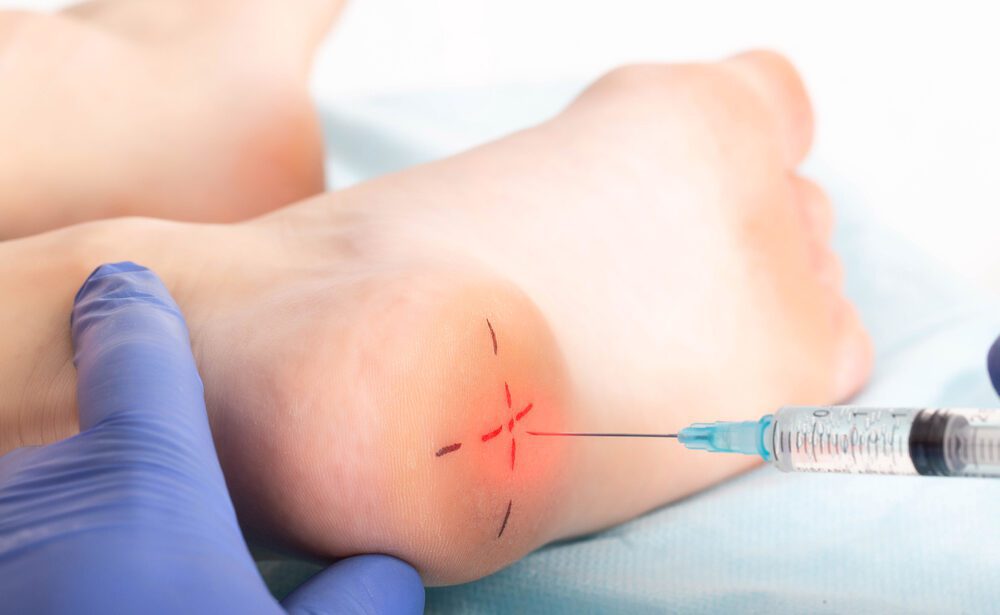Overview
Steroid injections, also known as corticosteroid injections, are a common treatment option for various inflammatory conditions and pain management. They deliver anti-inflammatory medications directly to the affected area, providing rapid relief from pain and swelling. This treatment is often used for joint pain, tendonitis, bursitis, and other inflammatory conditions. Our steroid injection services are designed to provide effective pain relief while minimizing side effects and improving overall patient outcomes.
Indications for Steroid Injections
Steroid injections may be indicated for a range of conditions, including:
- Arthritis: Osteoarthritis, rheumatoid arthritis, and psoriatic arthritis.
- Tendonitis: Inflammation of tendons, commonly seen in the shoulder, elbow, wrist, hip, knee, and ankle.
- Bursitis: Inflammation of the bursa, a fluid-filled sac that cushions bones, tendons, and muscles.
- Sciatica: Pain radiating along the sciatic nerve, often due to herniated discs or spinal stenosis.
- Other Conditions: Plantar fasciitis, carpal tunnel syndrome, and certain skin conditions like eczema.
Diagnostic Procedures
- Clinical Evaluation:
- A comprehensive assessment of symptoms, medical history, and physical examination to identify the site of pain and determine if steroid injections are appropriate.
- Imaging Studies:
- X-rays: To evaluate joint or bone conditions and assess the extent of damage.
- Ultrasound or MRI: In some cases, imaging may be used to visualize the affected area, particularly in soft tissue or nerve issues.
Procedure for Steroid Injections
- Preparation:
- The patient is informed about the procedure, potential benefits, risks, and expected outcomes. Consent is obtained.
- The injection site is cleaned with antiseptic to minimize infection risk.
- Anesthesia:
- Local anesthesia may be administered to numb the area and reduce discomfort during the injection.
- Injection:
- Using a sterile syringe and needle, a corticosteroid medication is injected directly into the affected area (joint, tendon, or bursa).
- Imaging guidance (ultrasound or fluoroscopy) may be used for precision in some cases.
- Post-procedure Care:
- Patients are monitored briefly for any immediate reactions. Aftercare instructions are provided, including rest and avoiding strenuous activities for a specified period.
Potential Benefits
- Rapid Pain Relief: Steroid injections can provide quick relief from pain and inflammation, often within a few days.
- Reduced Swelling: Helps decrease inflammation in the affected area, improving mobility and function.
- Improved Quality of Life: Enhanced ability to engage in daily activities and physical therapy due to reduced pain.
Possible Risks and Side Effects
While generally safe, steroid injections may have potential risks, including:
- Infection: Although rare, there is a risk of infection at the injection site.
- Pain at Injection Site: Some patients may experience localized pain or discomfort following the injection.
- Skin Changes: Temporary skin thinning or discoloration may occur at the injection site.
- Elevated Blood Sugar Levels: Patients with diabetes may experience temporary increases in blood sugar.
- Joint Damage: Repeated injections into the same joint can lead to cartilage damage over time.
Final Results
With appropriate use, steroid injections can lead to:
- Significant Pain Relief: Many patients experience substantial relief from symptoms, allowing for increased physical activity and improved function.
- Enhanced Quality of Life: Reduced pain and inflammation contribute to a better overall quality of life, enabling patients to engage more fully in daily activities and hobbies.
- Improved Mobility: With pain relief, patients often notice improved range of motion and ability to participate in rehabilitation exercises.

